[PL]
Witam społeczność HIVE 🐝
Jakiś czas temu postanowiłem się wybrać na krótką podróż do Pragi z racji wolnego czasu w pracy, jak i w szkole. Wyruszyłem z Krakowa flixbusem do Stolicy Czech. Podróż szybko minęła, chwile się przespałem i obudziłem się na głównym dworcu Florence.
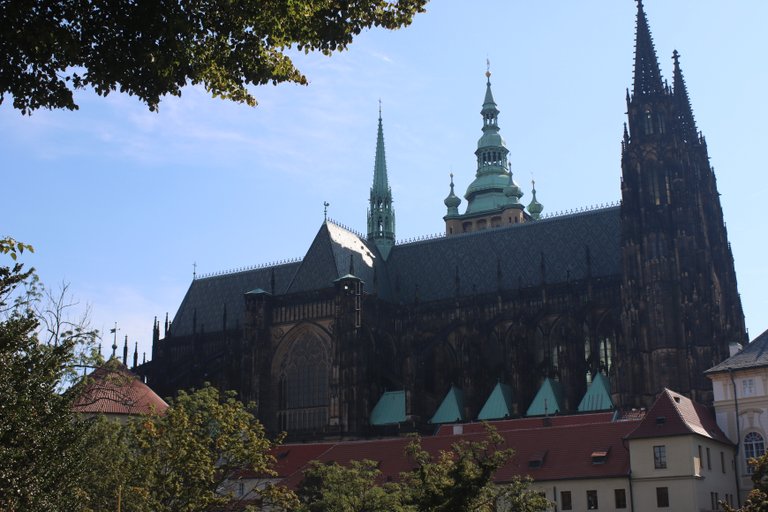
Moim pierwszym przystankiem w gotyckim mieście był siedziba senatu parlamentu Czech. Aktualnie prezydentem Czech jest Petr Pavel. W parlamencie zasiada 81 osób. Idąc w stronę parlamentu, przechodzimy przez ogród Wallensteina i Szkoły Jazdy. Największa atrakcja ogrodu jest wapienna ściana z grotami. Spostrzegawcze oko może znaleźć na ścianie, różne zwierzęta, przeróżne istoty oraz osoby. Tak samo można tam znaleźć woliery z sowami. Zresztą jest to bardzo ciekawa atrakcja dla osób spostrzegawczych. Po ogrodach przechadzają się pawie i dzikie kaczki, niektórzy z przewodników po Pradze śmieją się, że są to mali przewodniczy po ogrodach. Na głównej sali ogrodowej w czasie letnim organizowane są koncerty, akurat mi się udało natrafić na koncert muzyki filmowej w plenerze.


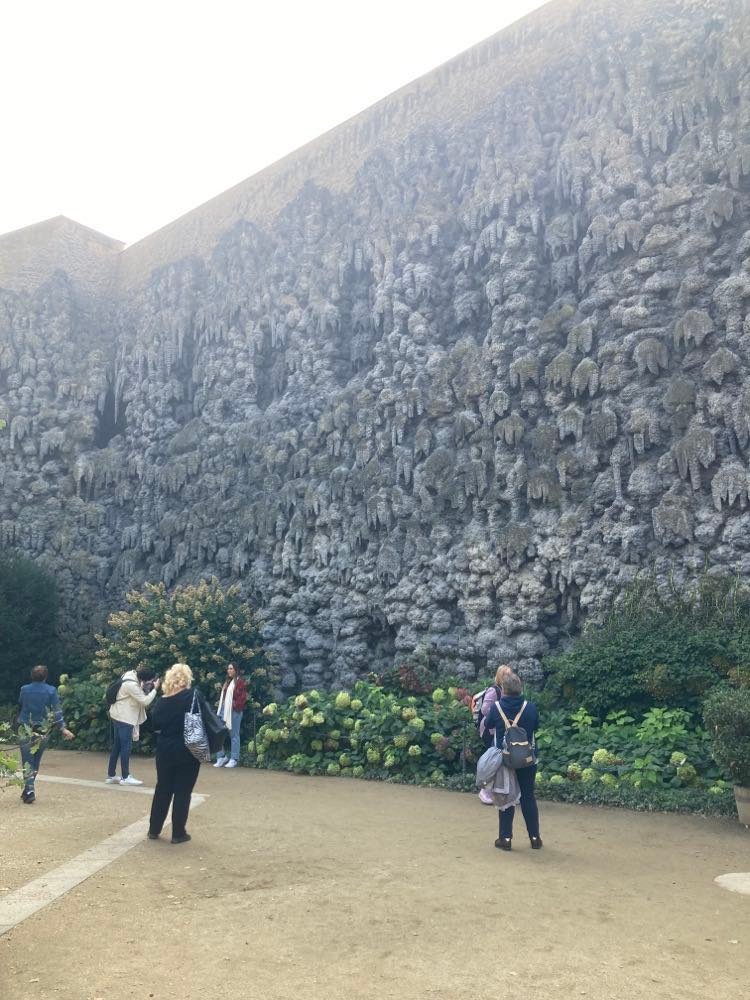
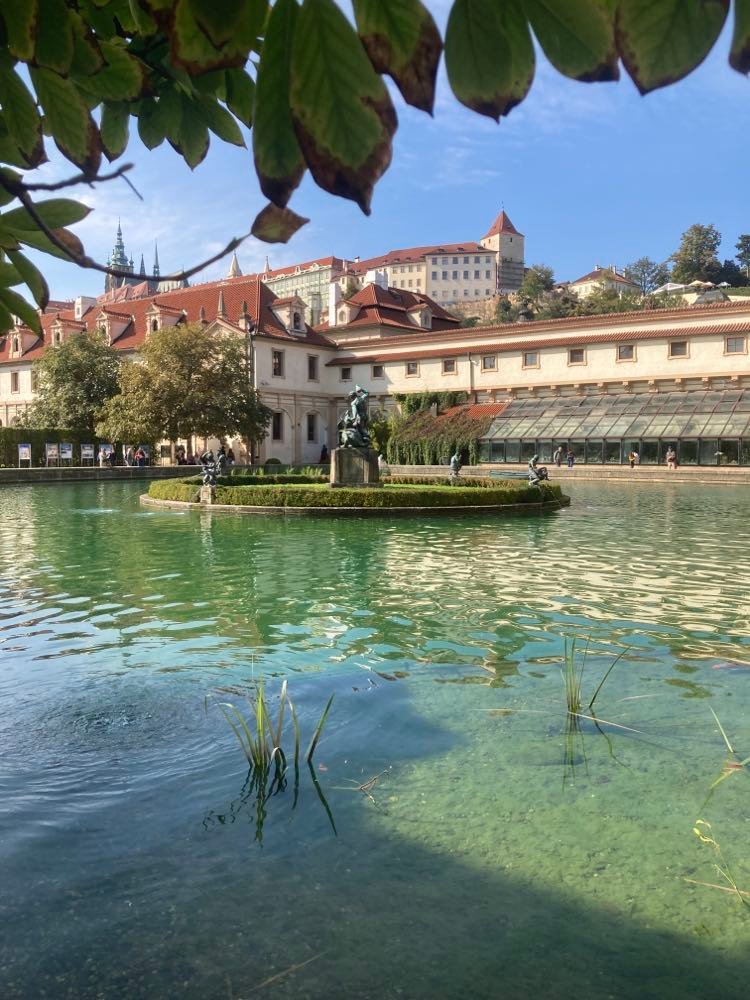
Jeszcze w międzyczasie udało mi się odwiedzić Zamek na Hradczanach inaczej Zamek Praski, co ciekawe zamek zajmuje powierzchnię około 70 tysięcy kilometrów kwadratowych i według księgi rekordów Guinnessa jest "największym ciągłym kompleksem zamkowym na świecie ".
Zamek powstał prawdopodobnie w 880 roku z inicjatywy księcia Borzywoja I z dynastii Przemyślidów. Został zbudowany na wzgórzu zwanym Ziži. Miejsce tradycyjnych spotkań plemiennych i składania ofiar bogom pogańskim.
W katedrze św. Wita, była koronacja czeskich królów i królowych. Nad Złotą Bramą, historycznym wejściem do katedry, znajduje się Skarbiec Korony Czeskiej ze św. Wacławem w stylu gotyckim. W katedrze pochowani są czescy władcy, patroni i arcybiskupi.
W katedrze św. Do Wita jest Wielka Wieża Południowa, która wznosi się na wysokość około 100 metrów. Na taras widokowy, z którego roztacza się wspaniały widok na panoramę miasta, prowadzi ponad 280 schodów. Na wieży znajduje się także największy w Czechach zegar Zygmuntowski z 1549 roku. Waży około 15 ton.

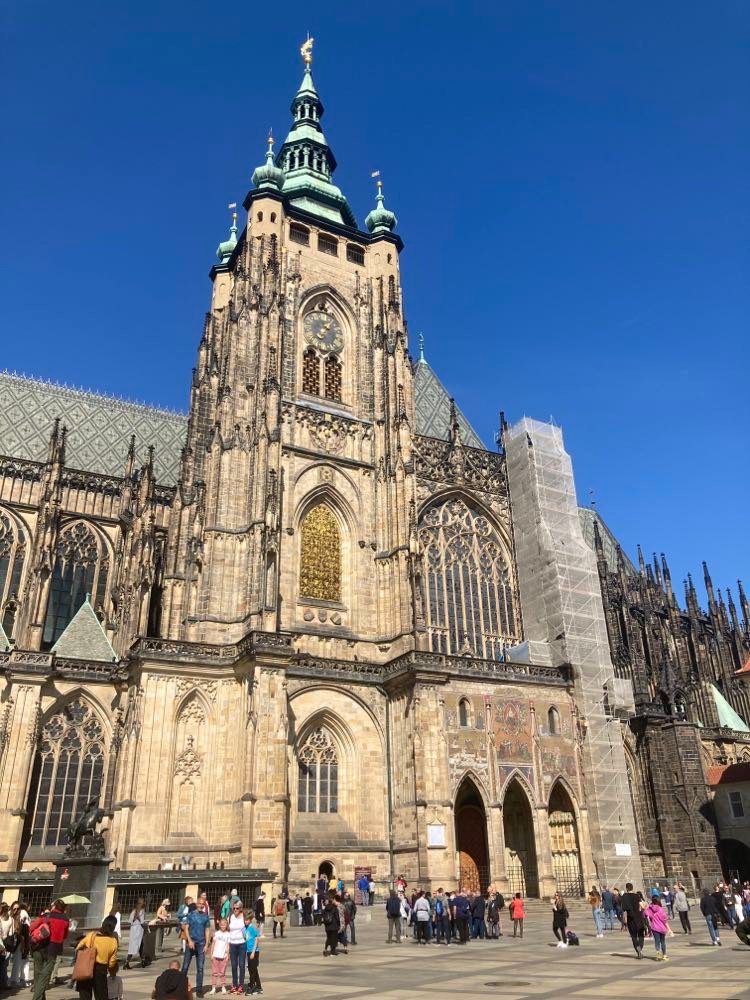
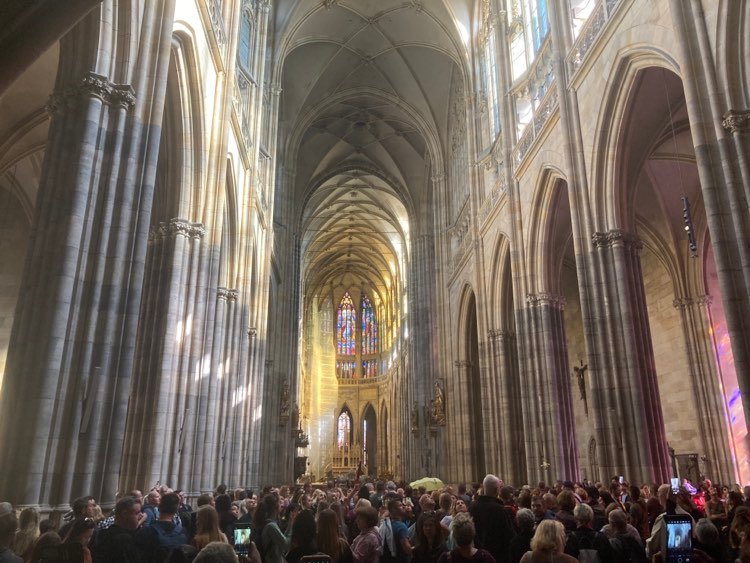
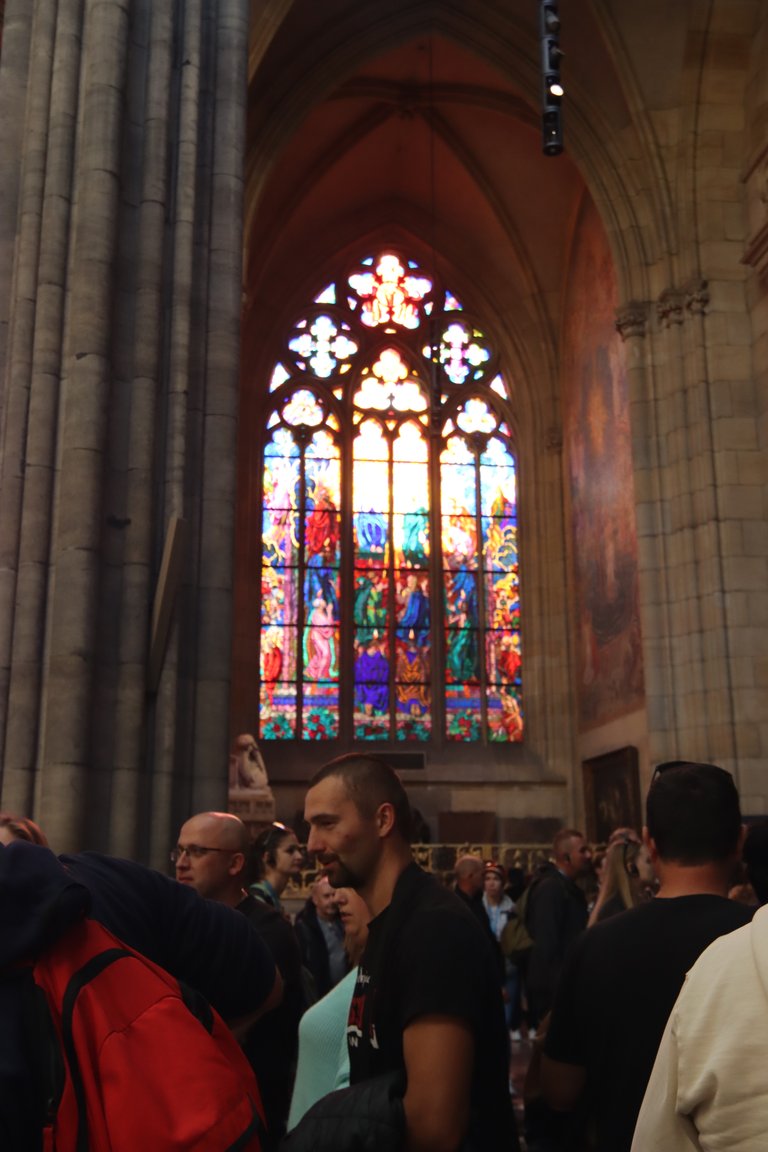
Po wizycie w Parlamencie udałem się na Most Karola na Starym Mieście (uważany przez wielu za największą atrakcję złotej Pragi), most położony jest na rzece Wełtawie, łączącej dzielnice Malá Strana i Staré Mésto. Całkowita długość mostu wynosi 516 m, a szerokość 9,50 m. 17 łuków mostu rozmieszczonych jest na 15 filarach. Według tablic informacyjnych most ten jest najstarszym kamiennym mostem na świecie. Most pierwotnie nosił nazwę Praski Most. Zbudowany w 1342 r. i przebudowany w 1357 r. most był do 1741 r. jedynym mostem na Wełtawie, po którym w latach 1905–1908 jeździł tramwaj konny, a do 1965 r. tramwaj elektryczny. Dziś dostępny jest wyłącznie dla pieszych. W okresie baroku most zdobiło 30 posągów świętych, min. Matthias Bernard Braun i rodzina Brokoffów (Jan Brokoff, Michał Jan Józef Brokoff, Ferdynand Maksymilian Brokoff). W 1787 r. wzniesiono tu także pomnik cesarza Józefa II (projekt ustawienia tu także posągu Karola VI nie został zrealizowany). Na jedne z balustrad umieszczono tablicę pamiątkową poświęconą Św. Janowi Nepomucenowi – według tradycji został wrzucony do Wełtawy 20 marca 1393 roku na rozkaz króla Wacława IV. Na moście znajduję się pomnik Jana Nepomucena, dotyka się go, bo podobno przynosi szczęście, ale są pewne zasady, żeby to szczęście osiągnąć, trzeba dotknąć posągu Jana dwoma palcami lewej ręki i wypowiedzieć w myślach życzenie, nikt nie może poznać jego treści, a samo życzenie musi być pozytywne. Sprzedawcy pięknych grafik i akwareli, artyści malujący autoportrety, producenci wisiorków i dekoracji zasiadają na moście Karola od wczesnych godzin porannych.



Teraz troszkę historii o Św. Janie Nepomucen z Pomuku urodził się pomiędzy 1340 a 1349 rokiem, nie wiadomo dokładnie kiedy, w wiejskim miasteczku Pomuk (niedaleko Pilzna), które połączyło się z sąsiednim miastem i zmieniło nazwę na Nepomuk. Czesi do dzisiaj piszą Jan z Pomuku. W 1380 roku został kanonikiem katedry praskiej i proboszczem w kościele św. Gawela. Następnie studiował prawo na uniwersytecie w Pradze, a w latach 1383–1387 prawo kanoniczne w Padwie. W 1389 r. został wikariuszem generalnym praskiego arcybiskupa Jana z Jenštejna. Jak na razie źródła są zgodne. W 1393 roku Jan popadł w niełaskę królewską. Król Wacław IV był kontrowersyjny i kontrowersyjny. Uwięził kanonika, torturował i utopił w Wełtawie 20 marca 1393. Niektóre źródła podają nieco inną chronologię. Nie różnią się w kwestii daty śmierci.
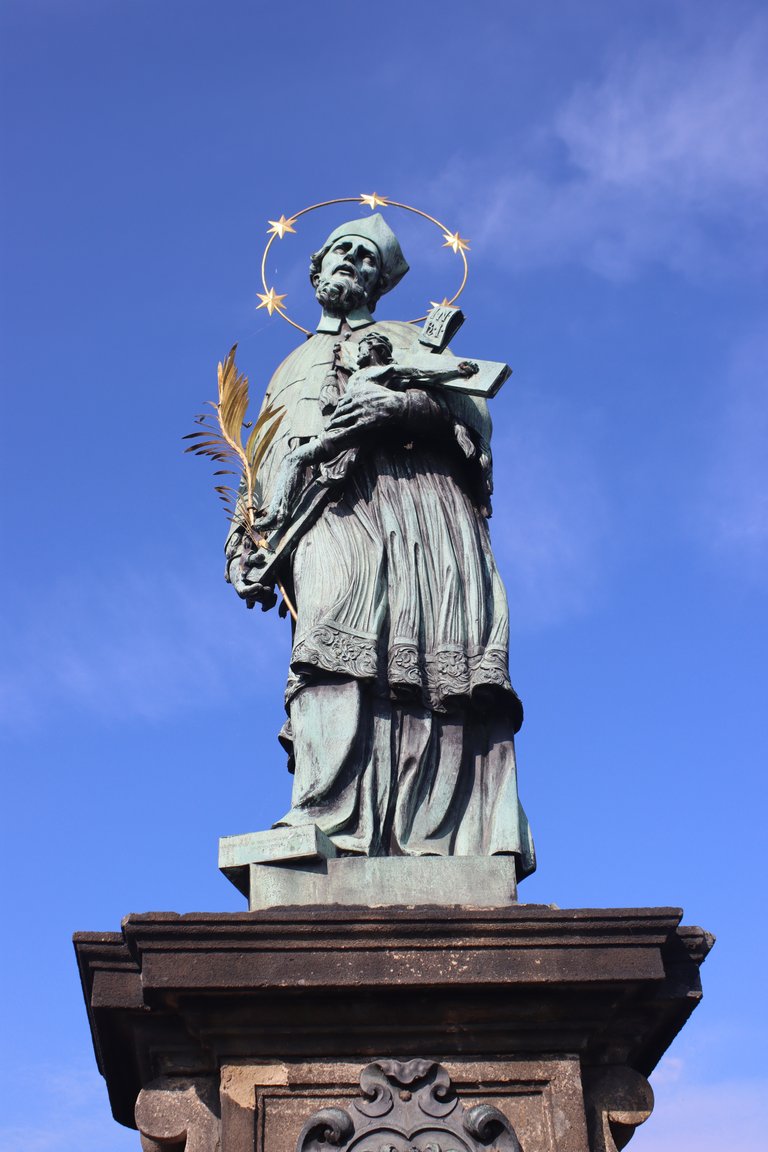
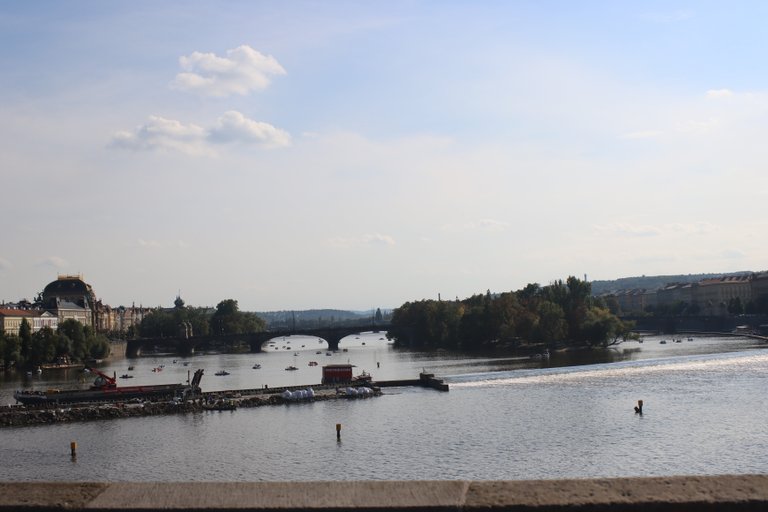
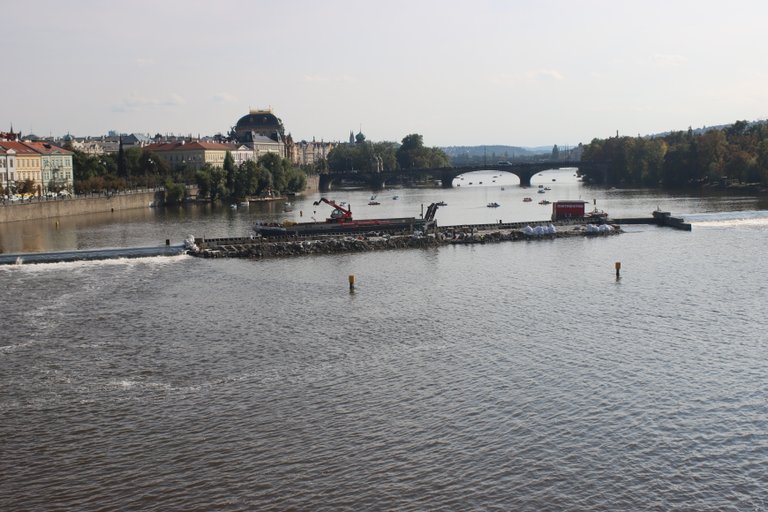
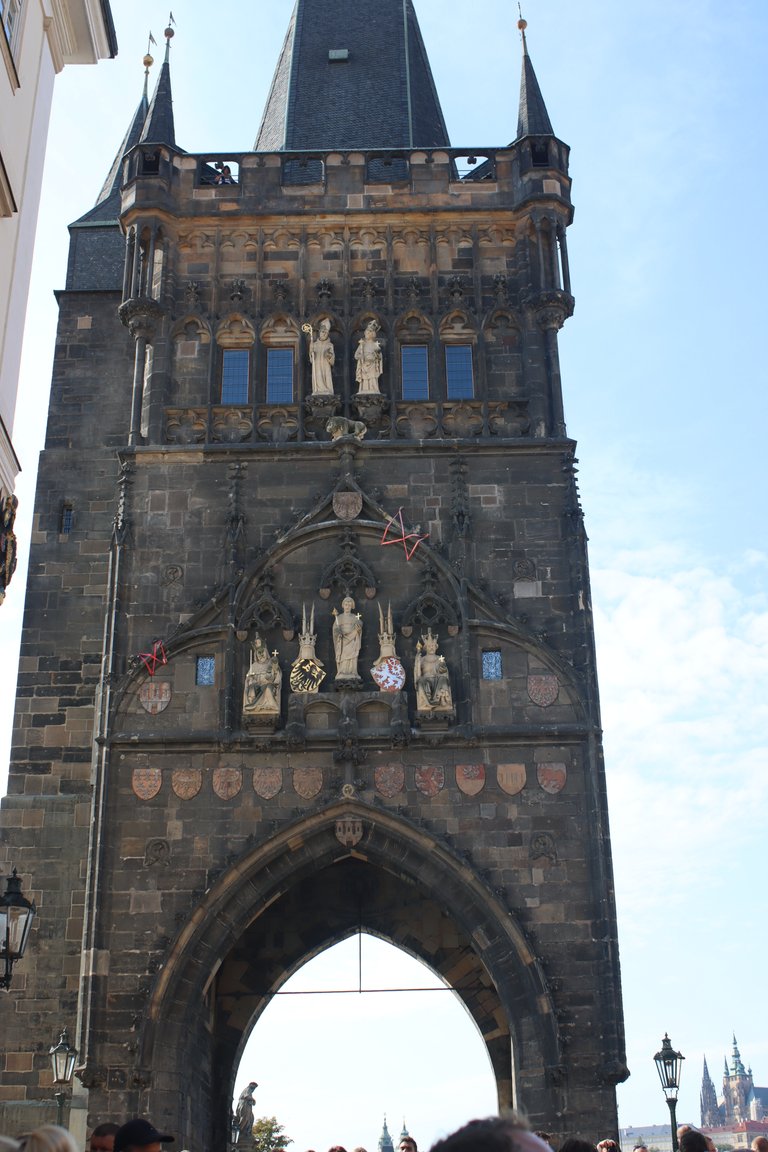
W kronice Chronica regum Romanorum (1459) autor odnotował, że król Wacław utopił spowiednika swojej żony, mistrza Jana, za to, że odmówił wyjawienia tajemnicy spowiedzi. Jest to pierwsze źródło historyczne dotyczące przyczyn zabójstwa księdza. 12 lat później Paweł Zdinek pisze szerzej o przyczynach morderstwa. Król obawiał się, że szlachcianka ma kochanka. Kobieta spowiadała się mistrzowi Janowi, więc ten chciał poznać jej kochanka dane osobowe od spowiednika. Niestety bezskutecznie. Z tych źródeł nie dowiadujemy się ani daty wspomnianych wydarzeń, ani imienia żony króla. W 1483 r. Jan z Krumlowa napisał, że Jan został zamordowany 10 lat wcześniej, w 1383 r. (prawdopodobnie przez pomyłkę kopisty). Ten błąd powtórzono później. Pisarz Wacław Hajek napisał w Annales Bohemoum, że było dwóch Janów z Nepomuka i obaj zostali zamordowani przez króla czeskiego.
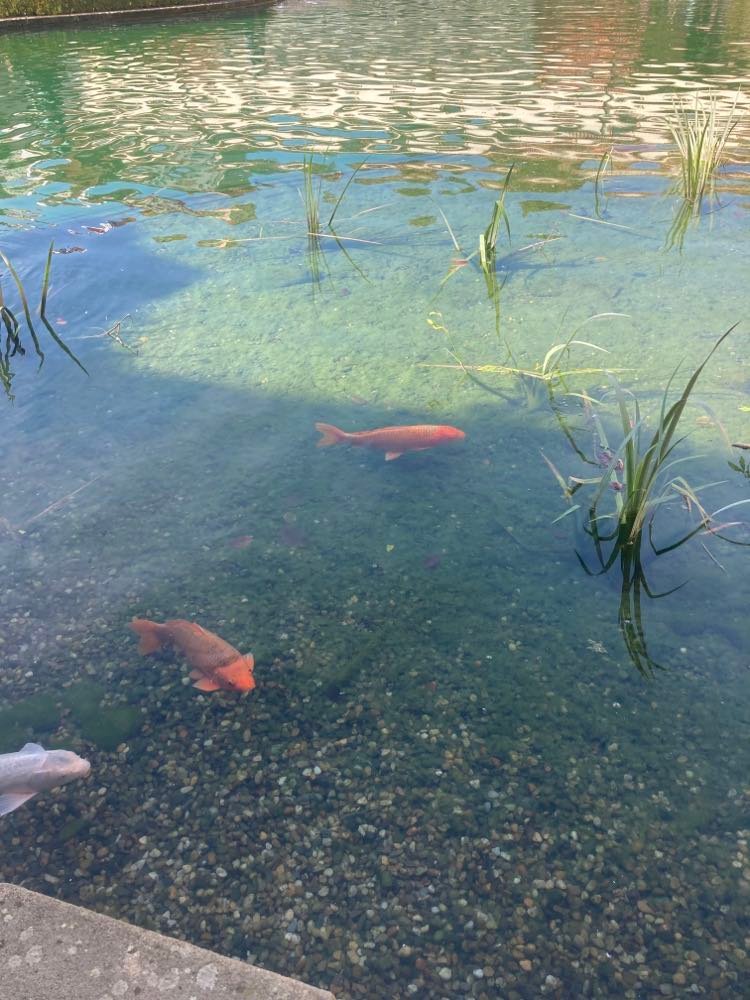
Pierwszy był spowiednikiem swojej żony, drugi, jako zwolennik arcybiskupa, wspierał jego wybór na opata zamożnego klasztoru kladrubskiego. Nie podobało się to Wacławowi, który chciał położyć rękę na klasztorze (zależny Wacław nieustannie potrzebował pieniędzy na walki toczone w jego królestwie). Zszokowany kazał utopić wikariusza arcybiskupa Jana z Jenštejna, czyli Jana Nepomucena. Obecnie źródło to budzi kontrowersje i nie jest uważane za ważne źródło historyczne. Bardzo prawdopodobną przyczyną śmierci Jana wydaje się bitwa o garnizon dochodowego klasztoru. Drugim, ostatnim źródłem szczegółowo opisującym historię czeskiego księdza jest „Vita b. Joannis Nepomuceni martyris” („Żywot błogosławionego Jana Nepomuceniego Męczennika” – 1680). Autorem jest jezuita Bolesław Balbinus. Jan Nepomucen był spowiednikiem Zofii, żony Wacława IV. Królowi bardzo zależało na tym, co wyznała jego żona. Jan strzegł tajemnicy spowiedzi. Z tego powodu był torturowany, zabity, a następnie wrzucony do rzeki. Tak to przedstawił jezuita i tak rozeszła się najsłynniejsza opowieść o męczeńskiej śmierci. W katedrze św. Wita (właściwie poświęconego trzem świętym: Witowi, Wacławowi i Wojciechowi), w absydzie poznajemy całą historię Jana – spowiednika.

Po przejściu przez most Karola wszedłem w Staromiejską Wieżę Mostową i przeszedłem przez ulicę Karlovą, gdzie skierowałem się w Kierunku Havelské tržiště, można by powiedzieć taki targ, tam zjadłem swój obiad i szybko ruszyłem do Paladium, jednej z większych galerii. Przeleciałem przez całą galerię biegiem w około 10 minut i znalazłem swój sklep.

Sklep z winylami, zakupiłem tam winyl Pink Floyd-The Wall. Album został wydany w 1979 roku dokładnie pod koniec listopada i na początku grudnia. The Wall to opera rockowa, według zamysłu Rogera Watersa, The Wall miał być protestem przeciw rockowym koncertom stadionowych. Album jest bardzo oparty na dużej części wątków o autobiografi Watersa. historia opowiada o życiu rockowego muzyka o pseudonimie Pink (od nazwiska Pinkerton). Utwór „Mother” ukazuje dzieciństwo chłopca wychowywanego przez samotną, nadopiekuńczą matkę-ojciec, którego Pink nigdy nie znał, zginął na wojnie we Włoszech podobnie jak ojciec Watersa (utwór „Another Brick in the Wall, Part 1” – „Kolejna cegła w murze”). „Another Brick in the Wall, Part 2”, opowiadający o zimnej, nieludzkiej i nieprzyjaznej szkole, w której uczniowie maszerują sztywno podobne do androidów-robotów, stał się jednym z najpotężniejszych i najbardziej znanych protest songów rockowych. O zwodniczym poczuciu siły, jaką daje młodość i rock&roll opowiada „Young Lust”; o nieudanych, kalekich uczuciowo związkach małżeńskich oraz obyczajowych ekscesach – „One of My Turns”; o utracie młodzieńczych ideałów – „Goodbye Blue Sky”.
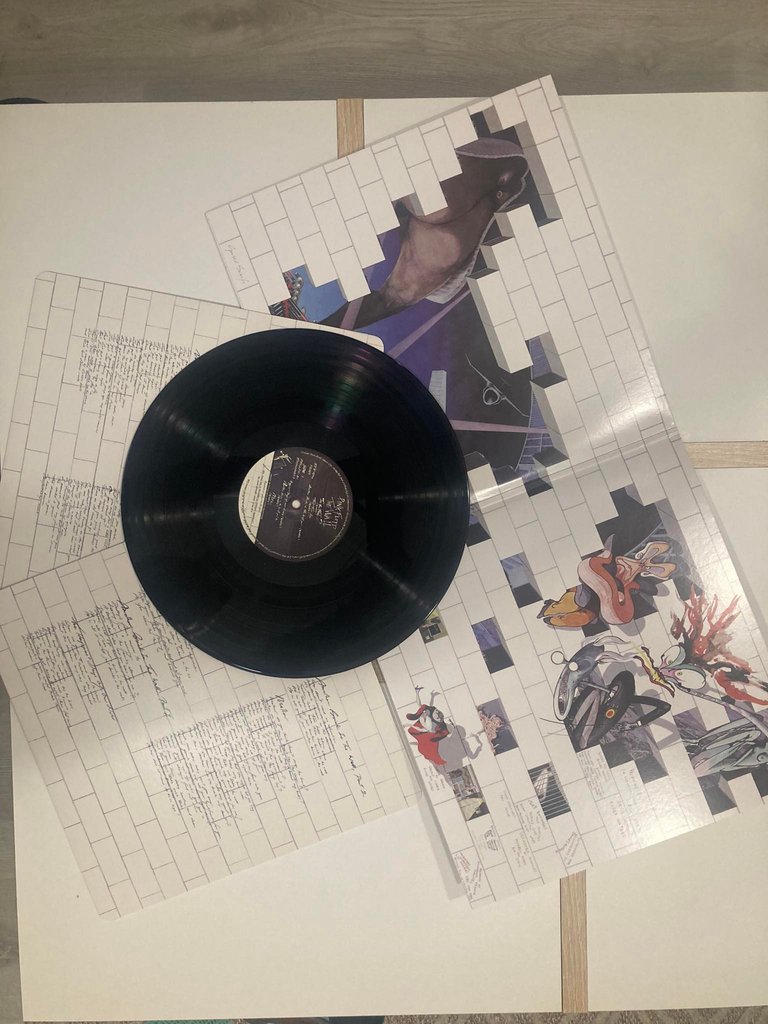
Kolejne utwory opowiadają o rosnącym, cegła za cegłą, murze odgradzającym muzyka od świata. Waters porównuje całe to życie do chodzenia po cienkim lodzie – „The Thin Ice”, gdzie każdy krok może spowodować załamanie. Pierwsza część albumu kończy się piosenką „Goodbye Cruel World” („Żegnaj, okrutny świecie”), która jest deklaracją ucieczki od pustego życia, samobójstwa.
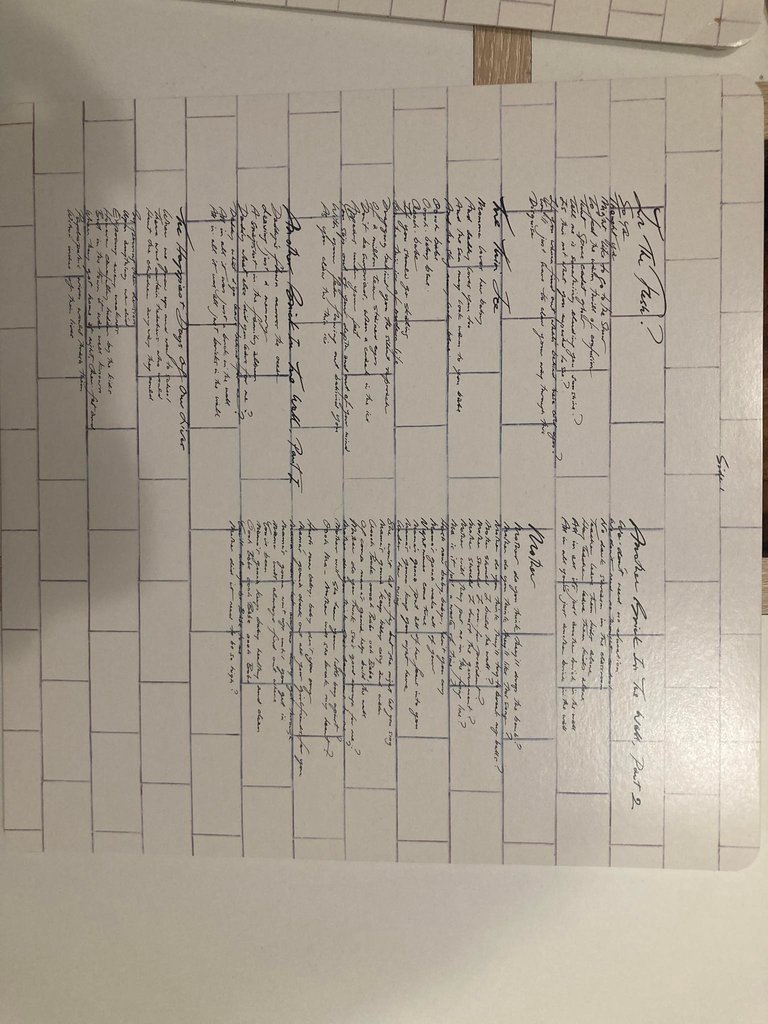
Zaś na drugiej płycie album otwiera ballada „Hey You”, w której Pink śpiewa sam do siebie z drugiej strony muru, jest to powrót do życia, a jednocześnie koszmaru, jaki szykuje mu jego wyobraźnia. Później mamy „The Trial” gdzie szykuje się mu jego własne szaleństwo.
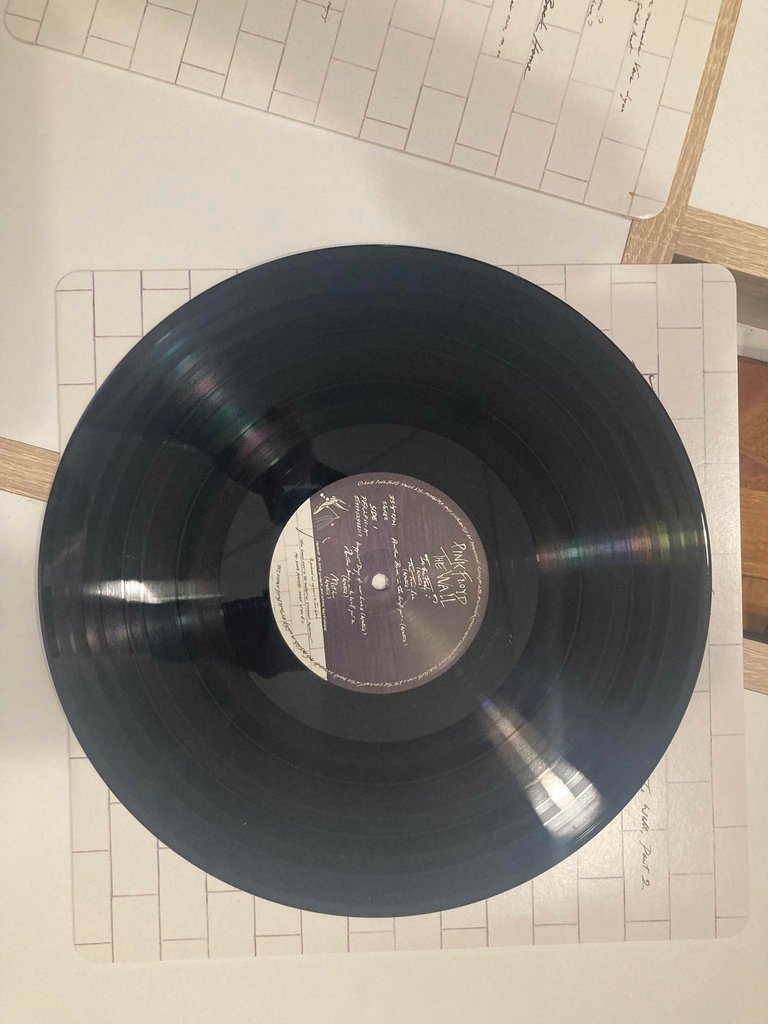
The Wall do dziś bije rekordy sprzedażowe (potwierdza to 1 miejsce na Amazonie, w najbardziej sprzedawanych albumach, wymiennie z the dark side of the moon). Album został najlepiej sprzedającą się podwójną płytą w historii muzyki rockowej.
Płyta poza dwoma utworami, w których komponowaniu wziął udział Gilmour, była autorskim dziełem Watersa. Pierwszy też raz od czasów Atom Heart Mother zastosowano aranżacje orkiestrowe. Na płycie prawie nieobecne były instrumenty klawiszowe (jak się potem okazało, w czasie nagrywania płyty Richard Wright został wykluczony z grupy z powodu jego pogłębiającego się konfliktu z Watersem). Album okazał się jednym z kamieni milowych, jeśli nie grupy, która w tym czasie już się rozpadała, to na pewno muzyki rockowej. Album w Polsce osiągnął certyfikat platynowej płyty, a jego reedycja z 2011 – dwukrotnie platynowej płyty. Co ciekawe mi udało się wyłapać reedycję z 2011 roku, lecz w folii.

Po biegu do Paladium śpieszyłem się w ostatnie miejsce, do Praskiego zegara astronomicznego-Pražský orloj. Jest to średniowieczny zegar astronomiczny, znajdujący się na południowej ścianie Ratusza Staromiejskiego w Pradze. Skonstruowany w 1410 roku przez zegarmistrza Mikołaja z Kadania i matematyka, prof. Jana Sindla, a według legendy ukończył go mistrz Hanusz oślepiony następnie przez władze miasta. Zegar jest jednym z najbardziej znanych zegarów astronomicznych na świecie i popularną atrakcją turystyczną. Zegar składa się z trzech głównych części: astronomicznej-pokazującej położenie ciał niebieskich, kalendarzowej – z medalionami reprezentującymi miesiące i animacyjnej – z ruchomymi figurkami dwunastu apostołów i wyobrażeniami Śmierci, Turka, Marności i Chciwości. Co najważniejsze zegar działa nieprzerwanie od 613 lat.
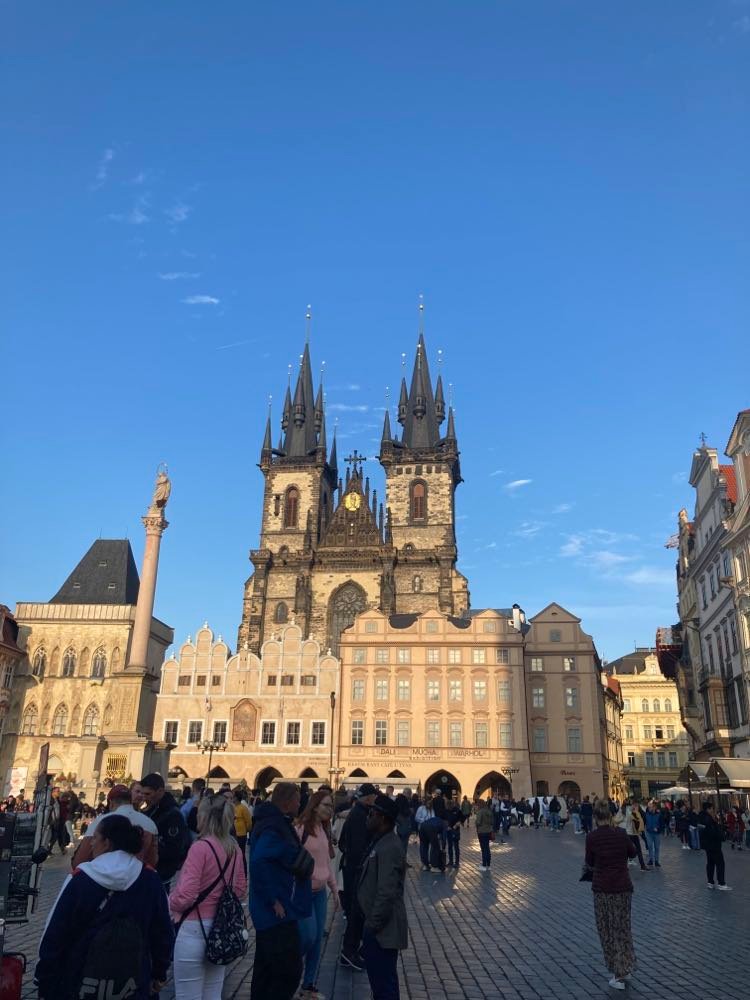
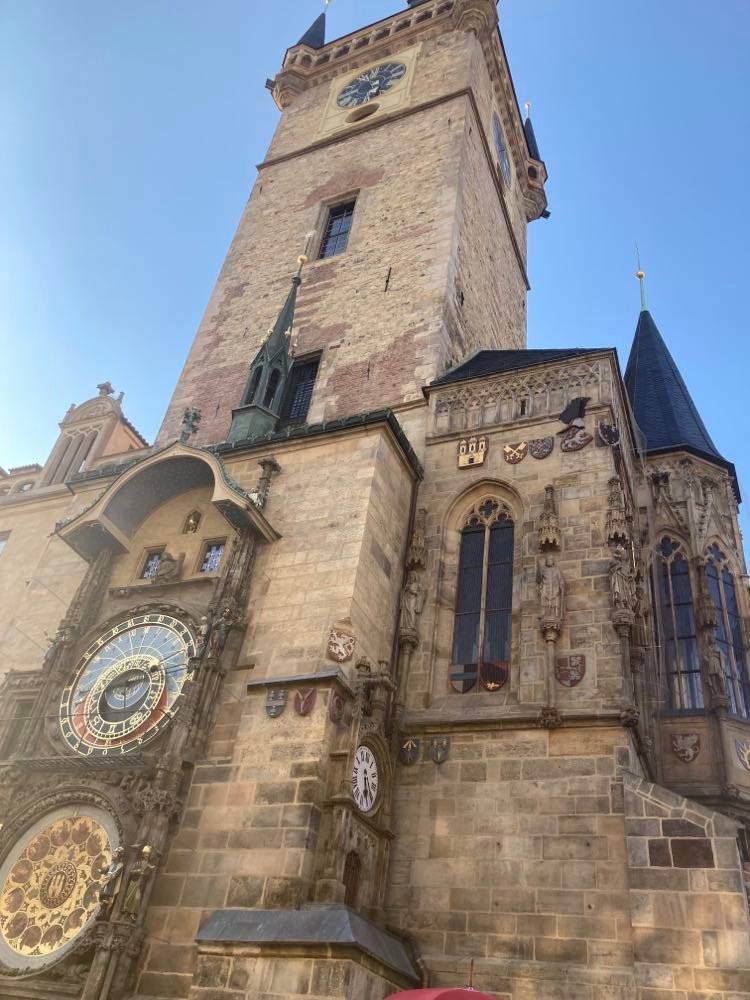
Podsumowując kontrowersyjną historię Pragi, według mnie jest to cudowne miasto z wieloma grzechami. Większość grzechów miasta do dziś nie wyszła na jaw i są jako miejsce legendy, może kiedyś doczekamy się prawdy. Powróćmy, do części wizualnej w Pradze, niezależnie od pory roku czy dnia jest pięknie i tak również było tym razem. Dziękuje za poświęcony czas na przeczytanie oraz zapraszam do dyskusji w komentarzach.
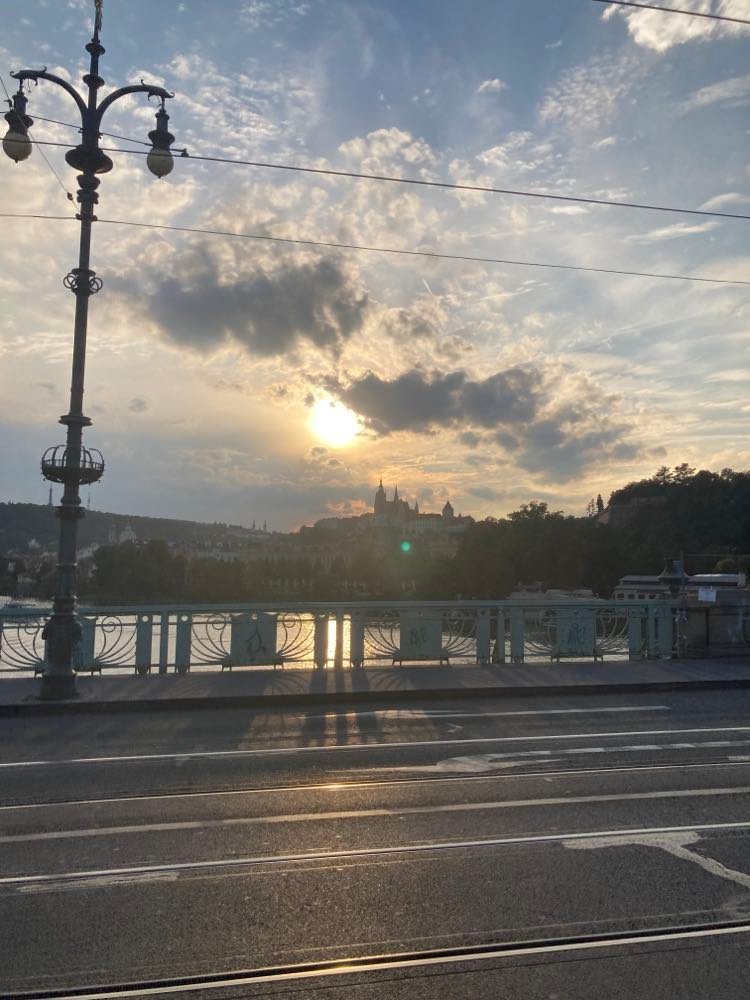
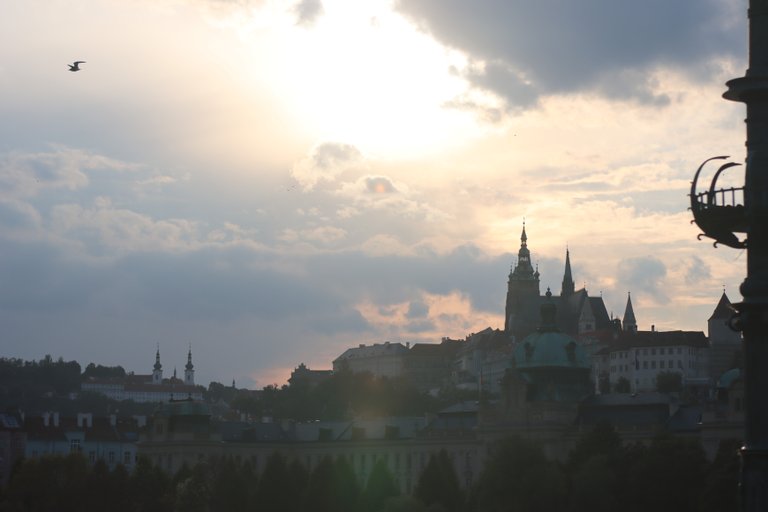
[ENG]
Hello HIVE community 🐝
Some time ago I decided to take a short trip to Prague because of my free time at work, as well as at school. I set off from Krakow by flixbus to the Czech capital. The trip passed quickly, I slept for a while and woke up at Florence's main station.

My first stop in the Gothic city was the seat of the Senate of the Czech Parliament. The current president of the Czech Republic is Petr Pavel. There are 81 members of parliament. Walking towards the parliament, you pass through the Wallenstein Garden and the Riding School. The garden's biggest attraction is a limestone wall with caves. A perceptive eye can find on the wall, various animals, different creatures and people. Likewise, you can find aviaries with owls there. Anyway, this is a very interesting attraction for perceptive people. Peacocks and wild ducks stroll through the gardens, some Prague guides laugh that they are little garden guides. The main garden hall hosts concerts in the summer time, I just happened to come across an outdoor film music concert.




Still in the meantime, I managed to visit Hradčany Castle a.k.a. Prague Castle, interestingly the castle covers an area of about 70,000 square kilometers and according to the Guinness Book of Records is "the largest continuous castle complex in the world ".
The castle was probably built in 880 on the initiative of Prince Borzyvoj I of the Přemyslid dynasty. It was built on a hill called Ziži. The site of traditional tribal meetings and offerings to pagan gods.
In St. Vitus Cathedral, was the coronation of Czech kings and queens. Above the Golden Gate, the historic entrance to the cathedral, is the Treasury of the Czech Crown with St. Wenceslas in Gothic style. Czech rulers, patrons and archbishops are buried in the cathedral.
St. Do Vitus Cathedral has the Great South Tower, which rises to a height of about 100 meters. There are more than 280 stairs leading up to the observation deck, which offers a magnificent view of the city skyline. The tower also houses the largest Sigismund clock in the Czech Republic, dating back to 1549. It weighs about 15 tons.




After visiting the Parliament, I went to the Charles Bridge in the Old Town (considered by many to be the greatest attraction of golden Prague), the bridge is located on the Vltava River, connecting the Malá Strana and Staré Mésto districts. The total length of the bridge is 516 meters, with a width of 9.50 meters. The bridge's 17 arches are arranged on 15 pillars. According to information boards, the bridge is the oldest stone bridge in the world. The bridge was originally named Prague Bridge. Built in 1342 and rebuilt in 1357, the bridge was the only bridge over the Vltava River until 1741, with a horse-drawn streetcar running from 1905-1908 and an electric streetcar until 1965. Today it is only accessible to pedestrians. During the Baroque period, the bridge was decorated with 30 statues of saints, min. Matthias Bernard Braun and the Brokoff family (John Brokoff, Michael John Joseph Brokoff, Ferdinand Maximilian Brokoff). A statue of Emperor Joseph II was also erected here in 1787 (the project to erect a statue of Charles VI here was not realized as well). One of the railings bears a memorial plaque dedicated to St. John of Nepomuk - according to tradition, he was thrown into the Vltava River on March 20, 1393 by order of King Wenceslas IV. On the bridge there is a statue of St. John of Nepomuk, it is touched because it is said to bring good luck, but there are some rules, in order to achieve this luck, you have to touch the statue of John with two fingers of your left hand and make a wish in your mind, no one can know its content, and the wish itself must be positive. Vendors of beautiful prints and watercolors, artists painting self-portraits, manufacturers of pendants and decorations have been sitting on the Charles Bridge since the early morning hours.



Now a bit of history about St. John Nepomucen of Pomuk was born between 1340 and 1349, it is not known exactly when, in the rural town of Pomuk (near Pilsen), which merged with a neighboring town and changed its name to Nepomuk. Czechs to this day write John of Pomuk. In 1380 he became a canon of Prague Cathedral and a parish priest at St. Gavel's Church. He then studied law at the University of Prague, and canon law in Padua from 1383-1387. In 1389 he became vicar general of Prague's Archbishop John of Jenštejn. So far, the sources agree. In 1393, Jan fell into royal disfavor. King Wenceslas IV was controversial and contentious. He imprisoned the canon, tortured and drowned him in the Vltava River on March 20, 1393. Some sources give a slightly different chronology. They do not differ on the date of death.




In the chronicle Chronica regum Romanorum (1459), the author recorded that King Wenceslas drowned his wife's confessor, Master John, for refusing to reveal the secret of his confession. This is the first historical source regarding the reasons for the priest's murder. 12 years later, Paul Zdinek writes more extensively about the reasons for the murder. The king feared that the noblewoman had a lover. The woman had confessed to Master John, so the latter wanted to know her lover's personal information from the confessor. Unfortunately, to no avail. From these sources we learn neither the date of the aforementioned events, nor the name of the king's wife. In 1483, Jan of Krumlov wrote that Jan was murdered 10 years earlier, in 1383 (probably by a copyist's mistake). This error was repeated later. The writer Wenceslas Hajek wrote in the Annales Bohemoum that there were two Janes of Nepomuk and both were murdered by the Bohemian king.

The former was his wife's confessor, while the latter, as a supporter of the archbishop, supported his election as abbot of the wealthy Kladruby monastery. This did not please Wenceslas, who wanted to lay a hand on the monastery (the dependent Wenceslas constantly needed money for the battles waged in his kingdom). Shocked, he had Archbishop John of Jenštejn's vicar, or Jan Nepomucen, drowned. Today this source is controversial and not considered a valid historical source. The very likely cause of Jan's death seems to be a battle over the revenue garrison of the monastery. The second and last source detailing the story of the Czech priest is "Vita b. Joannis Nepomuceni martyris" ("Life of Blessed John Nepomuceni the Martyr" - 1680). The author is the Jesuit Boleslav Balbinus. John Nepomucen was the confessor of Sophia, wife of Wenceslas IV. The king cared deeply about what his wife confessed. John guarded the secrecy of the confession. For this reason, he was tortured, killed and then thrown into a river. This is how the Jesuit portrayed it, and this is how the most famous story of the martyrdom spread. In St. Vitus Cathedral (actually dedicated to the three saints Vitus, Wenceslas and Adalbert), in the apse we learn the whole story of John the confessor.

After crossing the Charles Bridge, I entered the Old Town Bridge Tower and crossed Karlova Street, where I headed in the direction of Havelské tržiště, you could say such a market, ate my lunch there and quickly headed to Paladium, one of the larger galleries. I flew through the entire gallery running in about 10 minutes and found my store.

A vinyl store, I purchased a Pink Floyd-The Wall vinyl there. The album was released in 1979 in late November and early December to be exact. The Wall is a rock opera, as Roger Waters intended The Wall to be a protest against rock stadium concerts. The album is very much based on much of Waters' autobiography. The story is about the life of a rock musician nicknamed Pink (after Pinkerton). The song "Mother" shows the childhood of a boy raised by a single, overprotective mother-the father, whom Pink never knew, was killed in the war in Italy, as was Waters' father (the song "Another Brick in the Wall, Part 1" - "Another Brick in the Wall"). "Another Brick in the Wall, Part 2," which tells the story of a cold, inhuman and unfriendly school where students march stiffly similar to robotic androids, has become one of rock's most powerful and famous protest songs. "Young Lust" is about the deceptive sense of power provided by youth and rock & roll; "One of My Turns" is about failed, emotionally crippling marriages and moral excesses; "Goodbye Blue Sky" is about the loss of youthful ideals.
Pink Floyd on Denon dp 300f
The best song for HIVE

Subsequent songs tell of a wall growing, brick by brick, separating the musician from the world. Waters compares all this life to walking on thin ice - "The Thin Ice," where any step can cause a breakdown. The first part of the album ends with the song "Goodbye Cruel World" ("Goodbye, Cruel World"), which is a declaration of escape from an empty life, suicide.

And on the second album, the album opens with the ballad "Hey You," in which Pink sings to himself from the other side of the wall; it's a return to life, and at the same time the nightmare his imagination is preparing for him. Later we have "The Trial" where his own madness is being prepared for him.

The Wall continues to break sales records to this day (confirmed by its #1 spot on Amazon, in the most sold albums, interchangeable with the dark side of the moon). The album became the best-selling double album in the history of rock music.
With the exception of two tracks that Gilmour participated in composing, the album was Waters' own work. It was also the first time since Atom Heart Mother that orchestral arrangements were used. Keyboards were almost absent from the album (as it later turned out, at the time of recording the album Richard Wright was excluded from the group due to his deepening conflict with Waters). The album turned out to be one of the milestones, if not of the group, which was already falling apart at the time, then certainly of rock music. The album was certified platinum in Poland, and its 2011 reissue went double platinum. Interestingly, I managed to catch the 2011 reissue, but in foil.

After my run to the Paladium, I hurried to one last destination, the Prague Astronomical Clock-Pražský orloj. This is a medieval astronomical clock, located on the south wall of the Old Town Hall in Prague. It was constructed in 1410 by clockmaker Nikolai of Kadan and mathematician Prof. Jan Sindel, and according to legend, it was completed by Master Hanusz who was subsequently blinded by the city authorities. The clock is one of the most famous astronomical clocks in the world and a popular tourist attraction. The clock consists of three main parts: astronomical - showing the position of the heavenly bodies, calendar - with medallions representing the months, and animation - with moving figures of the twelve apostles and depictions of Death, Turk, Vanity and Greed. Most importantly, the clock has been in continuous operation for 613 years.


To sum up the controversial history of Prague, in my opinion it is a wonderful city with many sins. Most of the city's sins have not come to light to this day and are as a place of legend, maybe one day we will see the truth. Let's go back, to the visual part in Prague, no matter what time of year or day it is beautiful and so was this time. Thank you for taking the time to read and feel free to discuss in the comments.


Another post soon 🐝🐝
The photos were taken by me with a Canon EOS 90D and an Iphone SE
Pięknie tam, od dłuższego czasu wybieram się do Pragi i chyba mnie przekonałeś :) co do wpisu - kawał dobrej roboty 👍🏻
W Pradze zawsze nieźle, z Krakowa jest również połączenie PKP :P
Hiya, @ybanezkim26 here, just swinging by to let you know that this post made it into our Honorable Mentions in Travel Digest #1990.
Your post has been manually curated by the @pinmapple team. If you like what we're doing, please drop by to check out all the rest of today's great posts and consider supporting other authors like yourself and us so we can keep the project going!
Become part of our travel community:
such an impressive cathedral
Thanks for joining the Wednesday Walk :)
Yeah, i liked and i wanna get back there
Congratulations, your post has been added to Pinmapple! 🎉🥳🍍
Did you know you have your own profile map?
And every post has their own map too!
Want to have your post on the map too?
Congratulations @mar.gor! You have completed the following achievement on the Hive blockchain And have been rewarded with New badge(s)
Your next target is to reach 800 upvotes.
You can view your badges on your board and compare yourself to others in the Ranking
If you no longer want to receive notifications, reply to this comment with the word
STOPCheck out our last posts: